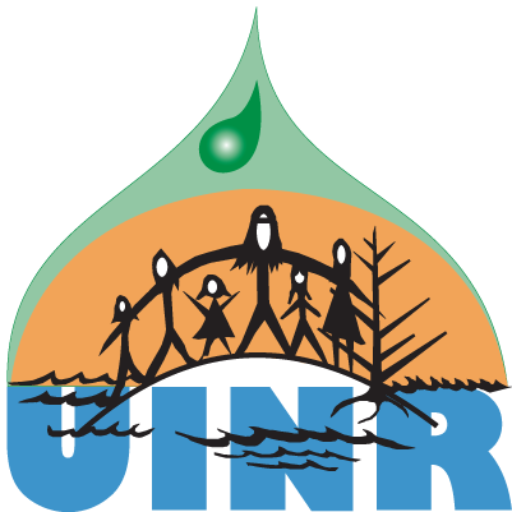Unama’ki Institute of Natural Resources (UINR) has added its support for a ban on salmon fishing in Middle and Baddeck Rivers. UINR represents the five Mi’kmaq communities in Cape Breton on issues related to natural resources and the environment. UINR is also a member of the Cape Breton Collaborative Salmon Initiate.
Nova Scotia Mi’kmaq have agreed to stop fishing for their rights-based food, social and ceremonial fisheries in these rivers in acknowledgement of the decline in the salmon populations.
Lisa Young, UINR’s Executive Director explains, “For many years we felt the loss of salmon in our rivers and our culture has suffered as a result. Once plentiful, salmon are now found in only a few rivers. Many rivers have such low numbers of salmon that they are below what scientists calculate are required to sustain the population. While the number of tags allotted to our communities have mostly remained the same, they are not enough to support the salmon requirements of our people. Right now our people do not use all our allotted tags because we feel that conservation is more important.”
Fisheries and Oceans Canada (DFO) have imposed restrictions on the recreational fishery by imposing size limits, seasonal closures and catch and release using barbless artificial flies. UINR feels that these measures are merely masking the problem of salmon decline and are only a band-aid solution for the critical situation that faces salmon today. Immediate and critical steps are needed to save the resource before more damage is done.
Recreational fishing is important for tourism. It sustains and creates employment, supports communities and simulates the economy. Government benefits from this fishery through licence sales. However, UINR believes that sustainability of a species is more important than short-term economic gain.
A catch and release fishery has many effects, ranging from injury to death. From the perspectives of biological and ecological consequences and the perspective of Mi’kmaq culture UINR is concerned on several issues.UINR biologist Shelley Denny explains “The general assumption is that released fish will survive. Estimated mortality rates are given at about 4% for salmon in our waters. However most fish do not die immediately after release and may die later. Improper handling can also increase fish mortality.Salmon may be vulnerable to predation immediately after release. They may be stressed, exhausted or in unfamiliar territory. Noise and movements during fishing can also attract predators, increasing the risk of mortality.
“Tissues will be damaged from the hook. Depending on where the hook has entered, it may be directly lethal or affect other organs such as eyes, mouth or jaw affecting their ability to feed. Injury puts fish at risk for disease and parasites which can affect fish health and increase mortality.
“Fish release stress hormones when they are removed from the water or trying to escape. Increase in stress hormones are linked to a decline in egg and sperm quality and lowered immune function.
“Upstream spawning migration patterns in adult Atlantic salmon are altered as a result of catch and release, as well as downstream movements, increased erratic movement patterns and a reduced migration distance. This may lead to a shift in the distribution of spawning populations within the river and disadvantages at the spawning grounds.
“Current catch and release fisheries take place during the spawning season. Peak spawning takes place during the fall and there is potential to alter spawning behaviour, damage spawning grounds, and kill eggs and alevin.”
The manner by which catch and release fisheries takes place is in direct violation of the laws of nature honoured by the Mi’kmaq people. Lisa Young explains “It is not in our tradition to catch then release fish. We were taught that all life has spirit and that all species are our kin. We were never encouraged to play with our food. To fish was to kill so that our people may survive. Gratitude was offered through ceremony. Salmon that was needed was taken and shared. Enough was left for the survival of the species. We don’t believe in harassment of salmon during their spawning migration if the results are to cause stress and injury for personal gratification. One spawning salmon has the potential to give life to many thousands of salmon in her lifetime. The death of one salmon today is the loss of thousands tomorrow.”
Despite commercial fishing closures, improvements in habitat and closures of the recreational fishery in many rivers, we have yet to see an improvement in salmon populations. Uncertainty in at-sea migration and survival and changes in water temperature as a result of climate change are speculated as having dire consequences to local salmon populations.
Steps need to be taken to save this resource for future generations. UINR supports the Assembly of Mi’kmaq Chiefs and their call for an end to recreational fishing in these rivers.
